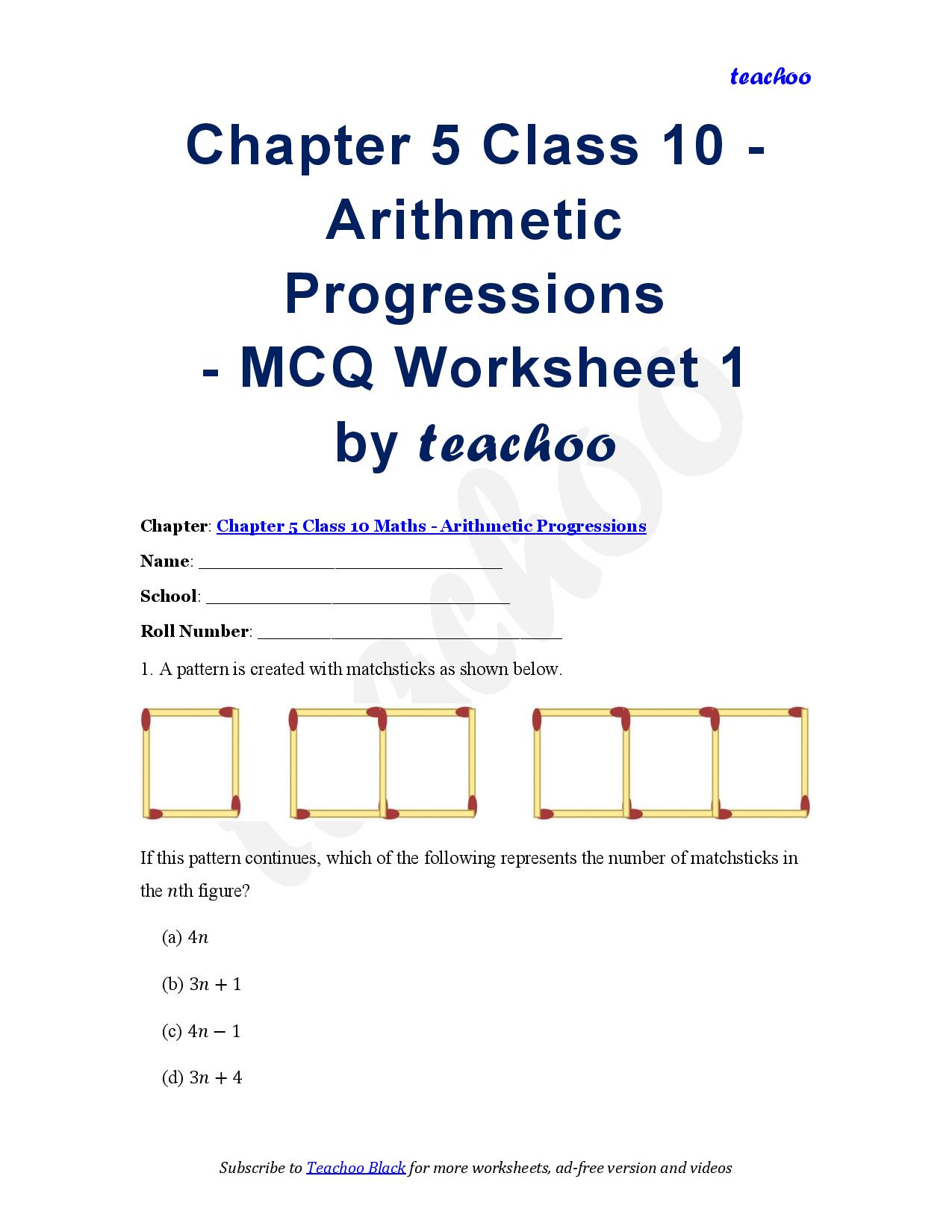
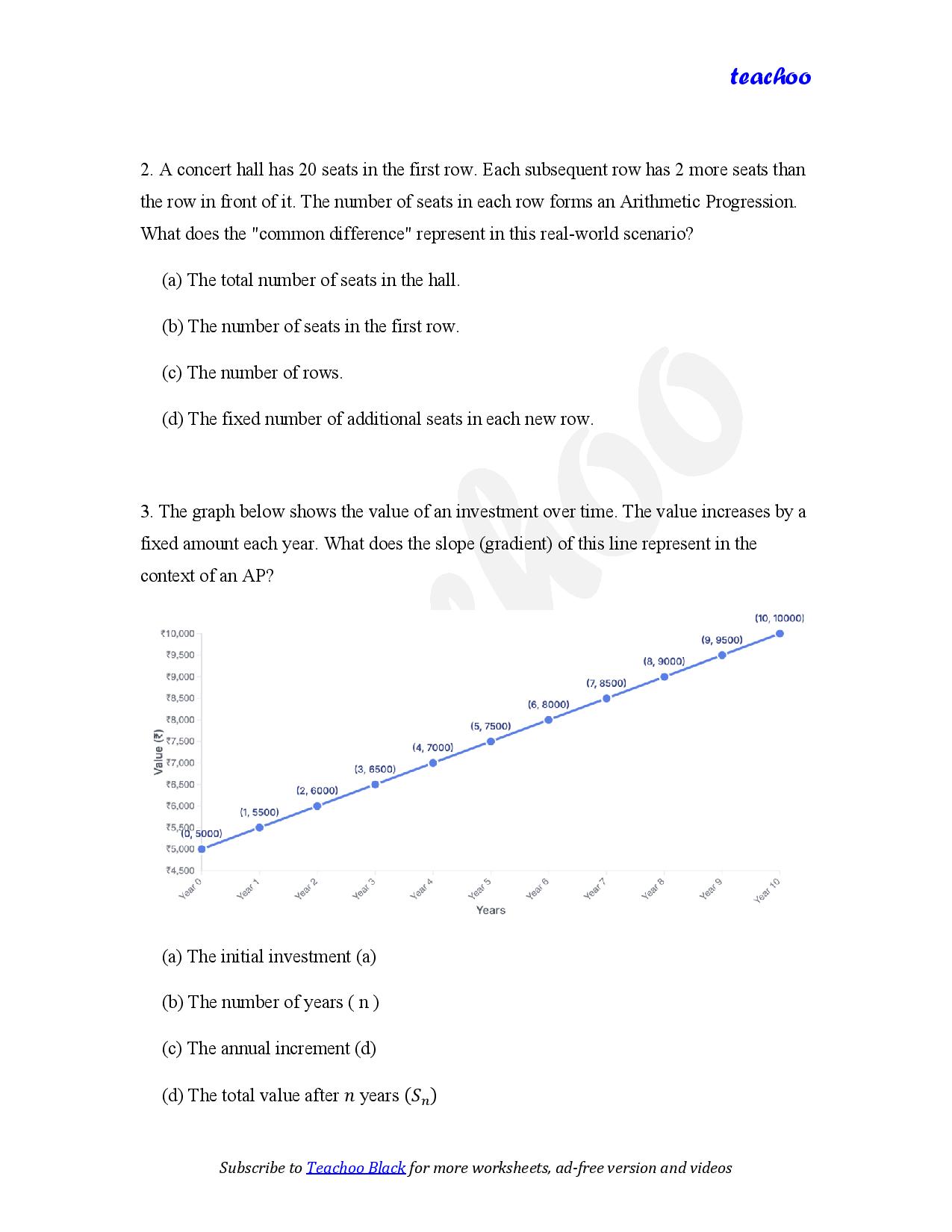
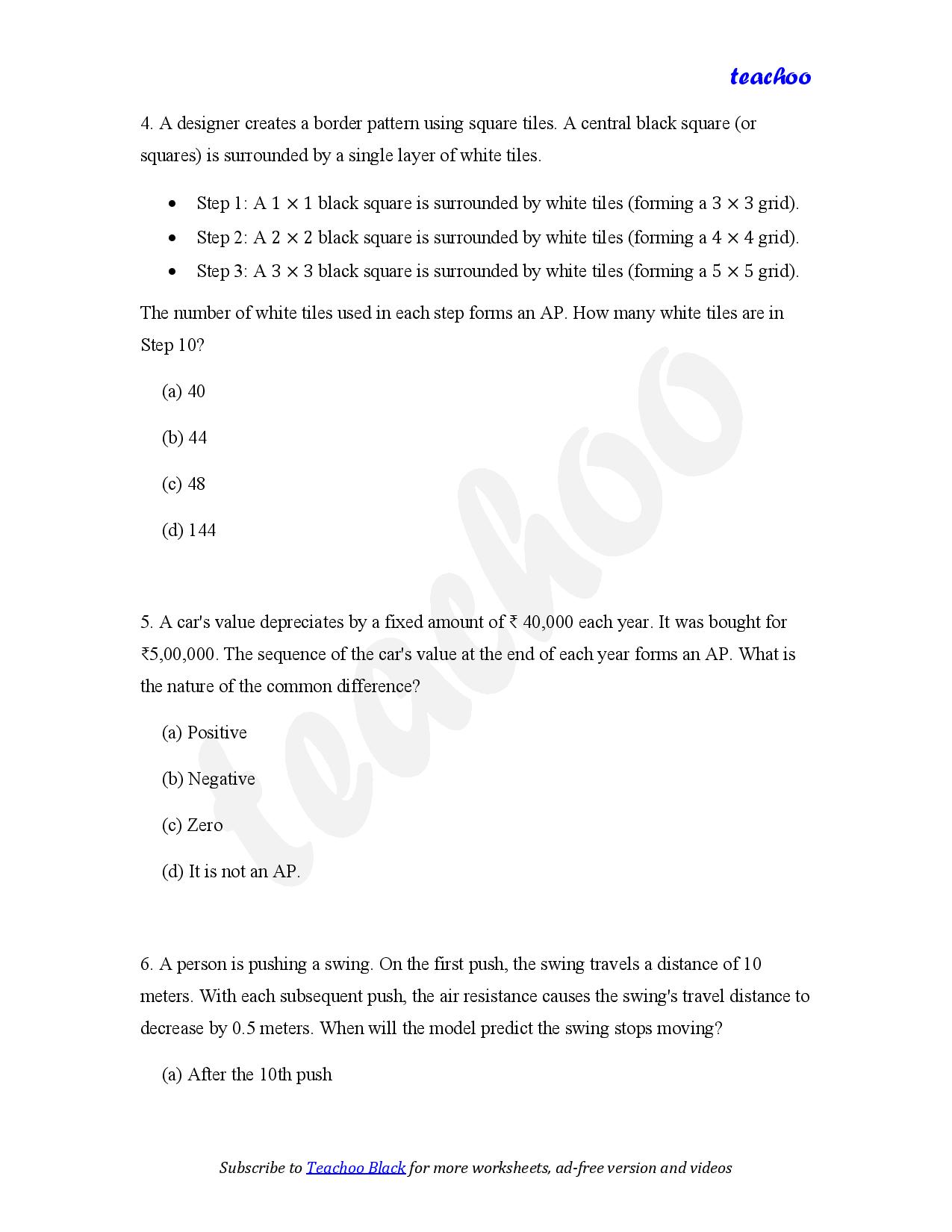
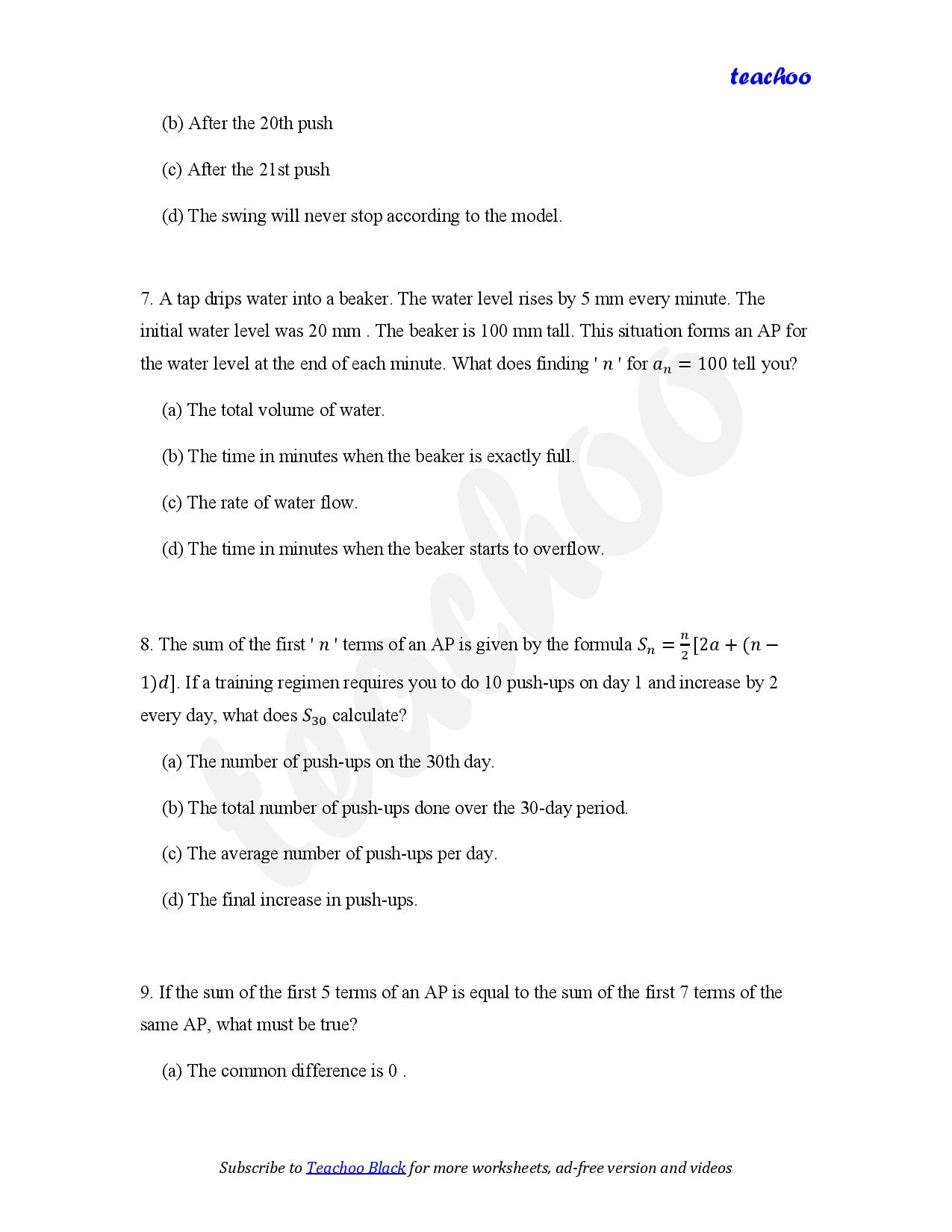
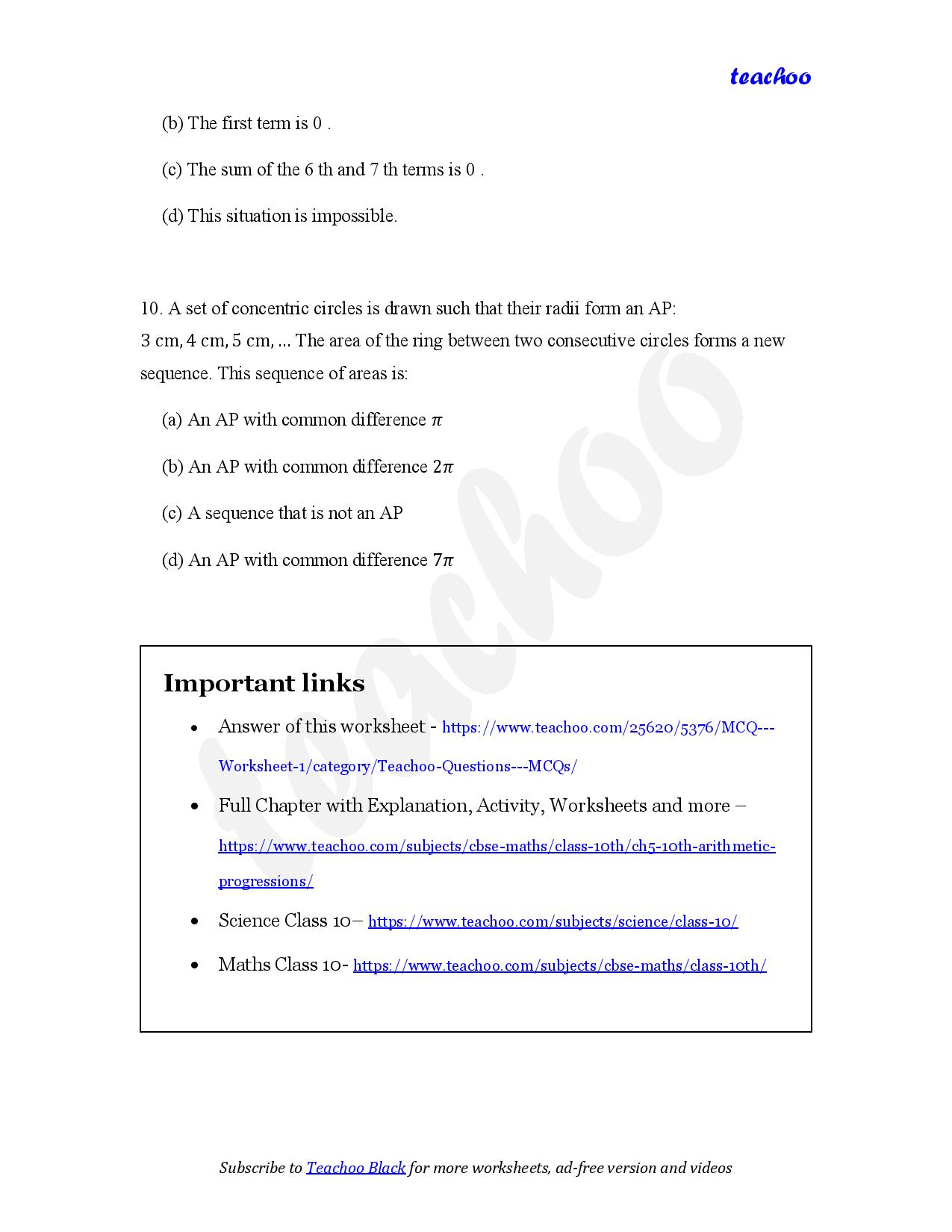

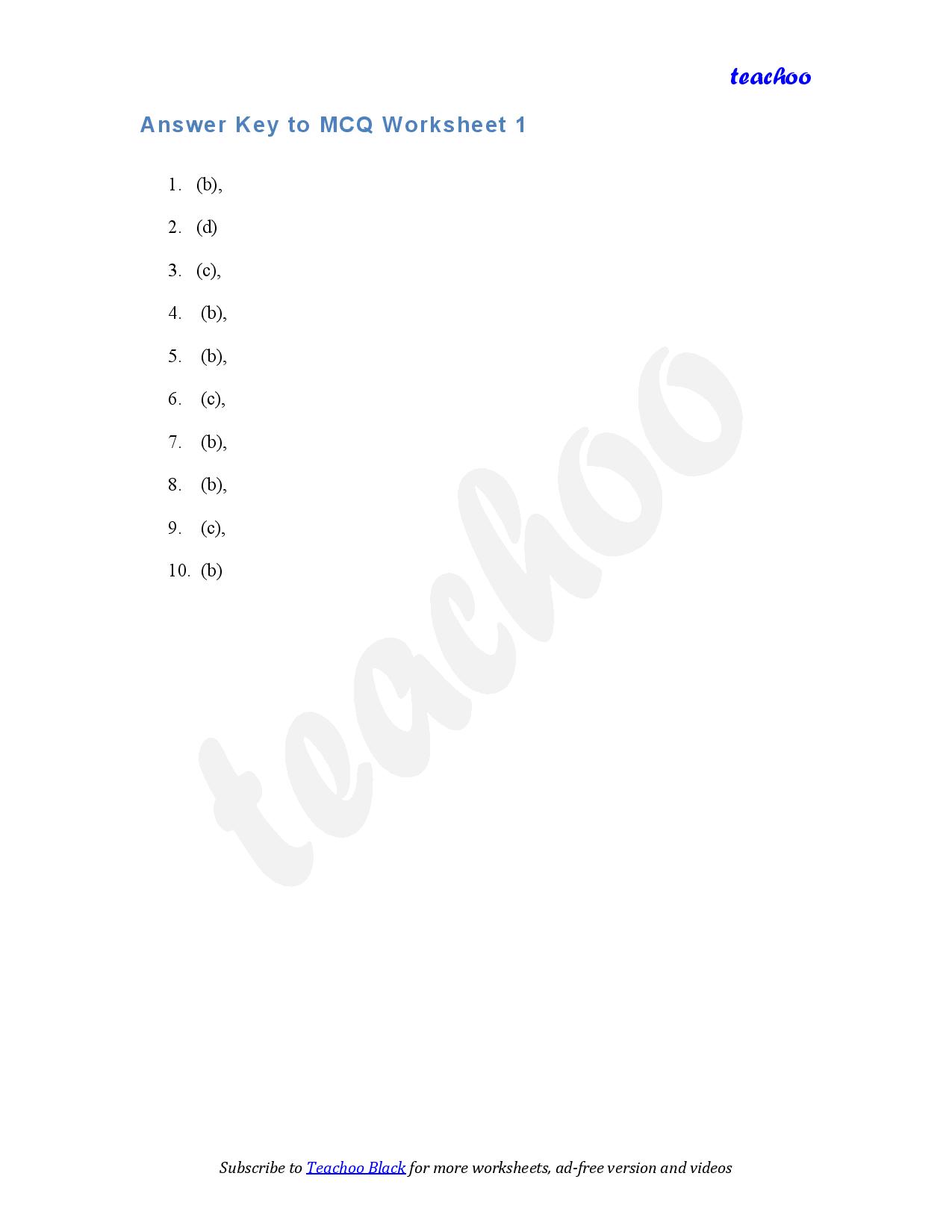
Last updated at July 21, 2025 by Teachoo







Transcript
Chapter 5 Class 10 - Arithmetic Progressions - MCQ Worksheet 1 by teachoo Chapter: Chapter 5 Class 10 Maths - Arithmetic Progressions Name: _____________________________ School: _____________________________ Roll Number: _____________________________ 1. A pattern is created with matchsticks as shown below. If this pattern continues, which of the following represents the number of matchsticks in the nth figure? (a) 4n (b) 3n+1 (c) 4n-1 (d) 3n+4 2. A concert hall has 20 seats in the first row. Each subsequent row has 2 more seats than the row in front of it. The number of seats in each row forms an Arithmetic Progression. What does the "common difference" represent in this real-world scenario? (a) The total number of seats in the hall. (b) The number of seats in the first row. (c) The number of rows. (d) The fixed number of additional seats in each new row. 3. The graph below shows the value of an investment over time. The value increases by a fixed amount each year. What does the slope (gradient) of this line represent in the context of an AP? (a) The initial investment (a) (b) The number of years ( n ) (c) The annual increment (d) (d) The total value after n years (S_n ) 4. A designer creates a border pattern using square tiles. A central black square (or squares) is surrounded by a single layer of white tiles. Step 1: A 1×1 black square is surrounded by white tiles (forming a 3×3 grid). Step 2: A 2×2 black square is surrounded by white tiles (forming a 4×4 grid). Step 3: A 3×3 black square is surrounded by white tiles (forming a 5×5 grid). The number of white tiles used in each step forms an AP. How many white tiles are in Step 10? (a) 40 (b) 44 (c) 48 (d) 144 5. A car's value depreciates by a fixed amount of ₹ 40,000 each year. It was bought for ₹5,00,000. The sequence of the car's value at the end of each year forms an AP. What is the nature of the common difference? (a) Positive (b) Negative (c) Zero (d) It is not an AP. 6. A person is pushing a swing. On the first push, the swing travels a distance of 10 meters. With each subsequent push, the air resistance causes the swing's travel distance to decrease by 0.5 meters. When will the model predict the swing stops moving? (a) After the 10th push (b) After the 20th push (c) After the 21st push (d) The swing will never stop according to the model. 7. A tap drips water into a beaker. The water level rises by 5 mm every minute. The initial water level was 20 mm . The beaker is 100 mm tall. This situation forms an AP for the water level at the end of each minute. What does finding ' n ' for a_n=100 tell you? (a) The total volume of water. (b) The time in minutes when the beaker is exactly full. (c) The rate of water flow. (d) The time in minutes when the beaker starts to overflow. 8. The sum of the first ' n ' terms of an AP is given by the formula S_n=n/2[2a+(n-1)d]. If a training regimen requires you to do 10 push-ups on day 1 and increase by 2 every day, what does S_30 calculate? (a) The number of push-ups on the 30th day. (b) The total number of push-ups done over the 30-day period. (c) The average number of push-ups per day. (d) The final increase in push-ups. 9. If the sum of the first 5 terms of an AP is equal to the sum of the first 7 terms of the same AP, what must be true? (a) The common difference is 0 . (b) The first term is 0 . (c) The sum of the 6 th and 7 th terms is 0 . (d) This situation is impossible. 10. A set of concentric circles is drawn such that their radii form an AP: 3" " cm,4" " cm,5" " cm,… The area of the ring between two consecutive circles forms a new sequence. This sequence of areas is: (a) An AP with common difference π (b) An AP with common difference 2π (c) A sequence that is not an AP (d) An AP with common difference 7π Important links Answer of this worksheet - https://www.teachoo.com/25620/5376/MCQ---Worksheet-1/category/Teachoo-Questions---MCQs/ Full Chapter with Explanation, Activity, Worksheets and more – https://www.teachoo.com/subjects/cbse-maths/class-10th/ch5-10th-arithmetic-progressions/ Science Class 10– https://www.teachoo.com/subjects/science/class-10/ Maths Class 10- https://www.teachoo.com/subjects/cbse-maths/class-10th/ For more worksheets, ad-free videos and Sample Papers – subscribe to Teachoo Black here - https://www.teachoo.com/black/ Answer Key to MCQ Worksheet 1 (b), (d) (c), (b), (b), (c), (b), (b), (c), (b)